A kitchen garden can be a great way to get fresh, organic produce right at your fingertips. Not only is it eco-friendly and sustainable, but it can also be a fun project for the whole family! In this blog post, we will discuss the basics of kitchen gardening: from starting your own garden to harvesting your own fruits and vegetables. We will also provide some tips on how to make your kitchen garden as eco-friendly and sustainable as possible. Are you ready to start growing your own nutritious produce? Dive in with us as we explore everything you need to know about how to start, grow, and harvest your own produce in this beginner's guide to kitchen gardens!

Also Read:
- Earth Day Quiz
- BBE rePurpose Plastic Neutral: All About Our New Partnership
- Beginner’s Guide to Farm to Table Living
How To Make a Kitchen Garden
As you start your healthy-eating journey, which not round it out by entering our Ride Well Giveaway? You'll have the chance to win a Peloton, along with some other cool goodies!
Step One: Make a Plan for Your Kitchen Garden
Before you start digging up your kitchen, it's important to plan out what kind of garden you want. Do some research on the types of plants that do best in kitchen gardens and choose ones that fit with your lifestyle or preferences. For example, if you're looking for a plant that doesn't require a lot of maintenance, consider growing herbs. If you're looking for something that will produce a lot of fruits or vegetables, go with a vegetable garden.

Once you've decided on the types of plants you want to grow, it's time to figure out the layout of your kitchen garden. This will mainly depend on the size of your kitchen and the amount of sunlight it gets. If you have a small kitchen, consider using vertical gardening techniques to maximize space. If you have a large kitchen, you may want to create several different garden beds. No matter what layout of garden bed you choose, be sure to make room for a compost bin and water source!
For soil, it depends on the plant you're growing. Some will require more moisture retentive soil, others loose soil, clay soil, well drained soil, sandy soils, etc. You'll also be considering the soil temperature. In any case, this is something to make note of as you settle on your crop line up.
SELECT THE TYPE OF KITCHEN GARDEN THAT WORKS FOR YOUR SPACE
Every home is different so make sure your kitchen garden works with the space you have!

VERTICAL SPACE GARDENS FOR SMALL SPACES
Small spaces benefit most from vertical space gardens. Vertical spaced gardens are a great way to maximize your growing space by using wall space and other vertical surfaces. You can hang baskets, grow plants in containers that fit on ledges or windowsills, or use trellises to support climbing plants.

If you have a small kitchen with little to no wall space, consider using a tabletop garden instead. Tabletop gardens are perfect for small spaces because they don't take up any floor space. They also come in many different shapes and sizes, so you can find one that fits perfectly on your kitchen counter or table.
No matter what type of kitchen garden you choose, be sure to select plants that will thrive in the conditions of your home!
Step Two: Start Your Seeds Indoors
Once you have your kitchen garden planned out, it's time to start growing! The first step is to start your seeds indoors. You can do this by planting them in small pots and keeping the soil moist until they sprout up into seedlings. It's best not to let the plants get too big before transplanting them into their kitchen garden location because they may become rootbound and die off due to a lack of nutrients in the soil.

GET YOUR SUPPLIES
To start your kitchen garden, you'll need some essential supplies: pots, soil mix (or potting soil), water source such as a watering can or spray bottle with a misting nozzle attached and plant food (optional). You can buy all of these supplies at your local garden center or online. Oh, and don't forget your seeds! Choosing which fruits, veggies, and herbs to grow can be a bit daunting if you've never gardened before. For total beginners, we recommend these garden staples (Don't worry! These beauties are very easy to grow even if you have a black thumb).

Plant Options
- Mint: Mint is considered an invasive plant because it is extraordinarily harty and very easy to propagate. It grows well in shady areas and can be used in a variety of recipes. Mint plays a leading role in many Middle Eastern and African dishes as well as being a dessert and hot tea favorite.
- Tomatoes: Tomatoes are a kitchen garden classic for good reason- they're easy to grow and you can use them in so many dishes! Be sure to choose a determinate or bush-type tomato plant such as cherry tomatoes if you have limited space.

- Rosemary: Rosemary is a fragrant and easy-to-grow herb that does well in pots. It's perfect for kitchen gardens because it doesn't take up much space and the leaves can easily be harvested for cooking. Best of all, it's heat resistant, making it perfect for warmer climates or hot summers. These edible plants lead many Italian and French dishes and is a favorite in breads and pastries.
- Basil: Basil is a kitchen garden must-have. It's easy to grow and goes in just about any Italian dish you can think of!
- Oregano: Oregano is another herb that does well indoors or out, so it's perfect for kitchen gardens. Its flavor adds depth to many dishes including pizza, pasta sauces, soups, and omelets. It's also delightfully fragrant!

- Cucumbers: Cucumbers are a kitchen garden staple that can be grown in pots or small spaces. They provide delicious crunch and flavor to salads, sandwiches, sushi, summer beverages, and other dishes. You can also make your own pickles with them!
- Peppers: Peppers come in many different sizes and flavors from hot chili peppers to sweet bell peppers- so there's something for everyone. They're easy to grow and are great additions to many dishes.
- Zucchini: Zucchini is a versatile kitchen garden vegetable that can be used in many different dishes such as pasta, pizza, breads, desserts, and salads. It's also really easy to grow!

- Lettuce: Lettuce or salad greens are a kitchen garden must-have that can be grown in pots or small spaces. It's easy to grow and goes in just about any salad you can think of!
- Peppers: Peppers come in many different sizes and flavors from hot chili peppers to sweet bell peppers- so there's something for everyone. They're easy to grow and are great additions to many dishes.

- Beans or Potatoes: One kitchen garden staple that isn't always mentioned is bean seeds. If you're a beginner, it might seem like beans take forever to grow and they don't produce much fruit (or in this case, seed pods). However, beans are one of the most versatile vegetables you can grow in your kitchen garden and they're really easy to care for. Plus, once you have a few bean plants in your garden, you'll be able to harvest fresh beans all summer long! If you're looking for an alternative to beans, consider planting potatoes. Potatoes are another vegetable that's easy to grow, and they yield a lot of tubers for your kitchen.
PLANT YOUR SEEDS
We recommend using organically grown seeds or heirloom seeds for best results. Heirloom seeds are often more disease-resistant, which means they will grow better in kitchen gardens than conventionally grown plants outdoors.

When planting your seeds, be sure to follow the instructions that come with the seed packet. Each type of seed has its own ideal planting depth and spacing requirements.
Step Three: Plant Your Garden Beds
Once your seedlings have sprouted, it's time to plant them in their kitchen garden location. If you're using a raised bed or container garden, you can put them directly into the soil. If you're using a kitchen window or patio area without any dirt nearby, it may be best to plant them in pots and then transfer those pots when they've grown large enough. Different plants will require different amounts of sunlight. For instance, some may require a few hours of direct sunlight, others direct sunlight or full sun, and some shade. Be sure to check the background of the particular plant you're dealing with.

Step Four: Water and Fertilize Your Vegetable Garden
Now that your kitchen garden is all set up, it's time to take care of it! Watering and fertilizing your kitchen garden beds regularly will help them stay healthy for years to come. You can water them by hand using a hose or sprinkler system if you have one available in the kitchen area; otherwise try setting out some rain barrels underneath downspouts so they fill up naturally when it rains outside.
CREATE FOOD FOR YOUR OWN KITCHEN GARDEN BY COMPOSTING
One of the best bonuses of having your own kitchen garden is being able to use old food and organic matter as food for your plants! Instead of tossing eggshells or food scraps put them in a small, closed container and sprinkle a bit of soil on top. When your container gets full, dump it into one of your kitchen garden beds for easy access to more fertile soil.

You can also create fertilizer for your kitchen gardens by making a compost pile in your own backyard. Or, this can be somewhere else on your property with organic matter. (but not too close to where you want growing food!) You'll need to evaluate how much space you have before embarking on a compost pile, however, as they need a bit of room.

To make compost, layer green materials like grass clippings and kitchen scraps with brown matter such as leaves and dried plants from around the house. (Just don't include any meat products or dairy items because they'll attract pests!) You may have to add water every so often if there's no rain.
Step Five: Harvest Your Fruits and Vegetables
Once you've been growing your kitchen garden for a few weeks, it's time to harvest! If you're using raised beds or containers with drainage holes in the bottom of them, simply pull out one side panel at a time so that you don't disturb any of the plants growing inside. Then, turn over a section of soil with your hands and pull out whatever roots or shoots are attached to it. If not then just keep digging until you find something edible like carrots or potatoes underneath all those layers!

Once you've harvested the vegetable crops, it's time to start all over again with the raised beds! Kitchen gardens are a great way to get into gardening and also help the environment by reducing your carbon footprint. Not to mention, you'll be eating fresher and healthier food than what you would find at the grocery store. So what are you waiting for? Get growing your own food! We've hope you enjoyed these kitchen garden ideas.
For and grown by the kitchen table. 🥗👩🌾


























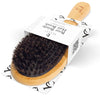
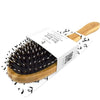
















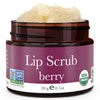
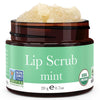
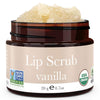



























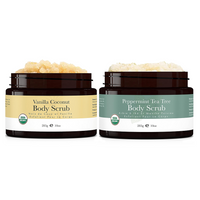
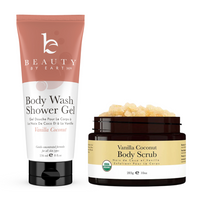


join the conversation